
View over Corinth. (1159k)
From the Corinth entry in Wikipedia:
Corinth was a city-state (polis) on the Isthmus of Corinth, the narrow stretch of land that joins the Peloponnese to the mainland of Greece, roughly halfway between Athens and Sparta. Since 1896, systematic archaeological investigations of the Corinth Excavations by the American School of Classical Studies at Athens have revealed large parts of the ancient city, and recent excavations conducted by the Greek Ministry of Culture have brought to light important new facets of antiquity.
For Christians, Corinth is well known from the two letters of Saint Paul in the New Testament, First and Second Corinthians. Corinth is also mentioned in the Acts of the Apostles as part of Paul the Apostle's missionary travels. In addition, the second book of Pausanias' Description of Greece is devoted to Corinth.
Ancient Corinth was one of the largest and most important cities of Greece, with a population of 90,000 in 400 BCE. The Romans demolished Corinth in 146 BCE, built a new city in its place in 44 BCE, and later made it the provincial capital of Greece.
Neolithic pottery suggests that the site of Corinth was occupied from at least as early as 6500 BCE, and continually occupied into the Early Bronze Age, when, it has been suggested, the settlement acted as a center of trade. However, there is a dramatic drop in ceramic remains during the Early Helladic II phase and only sparse ceramic remains in the EHIII and MH phases; thus, it appears that the area was very sparsely inhabited in the period immediately before the Mycenaean period. There was a settlement on the coast near Lechaion which traded across the Corinthian Gulf; the site of Corinth itself was likely not heavily occupied again until around 900 BCE, when it is believed that the Dorians settled there.
According to Corinthian myth as reported by Pausanias, the city was founded by Corinthos, a descendant of the god Zeus. However, other myths suggest that it was founded by the goddess Ephyra, a daughter of the Titan Oceanus, thus the ancient name of the city (also Ephyra).
Some ancient names for the place are derived from a pre-Greek "Pelasgian" language, such as Korinthos. It seems likely that Corinth was also the site of a Bronze Age Mycenaean palace-city, like Mycenae, Tiryns, or Pylos. According to myth, Sisyphus was the founder of a race of ancient kings at Corinth. It was also in Corinth that Jason, the leader of the Argonauts, abandoned Medea. During the Trojan War, as portrayed in the Iliad, the Corinthians participated under the leadership of Agamemnon.
In a Corinthian myth recounted to Pausanias in the 2nd century CE, Briareus, one of the Hecatonchires, was the arbitrator in a dispute between Poseidon and Helios, between the sea and the sun. His verdict was that the Isthmus of Corinth belonged to Poseidon and the acropolis of Corinth (Acrocorinth) belonged to Helios. Helios, the sun god, received the area closest to the sky, while Poseidon, the sea god, got the isthmus by the sea.
The Upper Peirene spring is located within the walls of the acropolis. "The spring, which is behind the temple, they say was the gift of Asopus to Sisyphus. The latter knew, so runs the legend, that Zeus had ravished Aegina, the daughter of Asopus, but refused to give information to the seeker before he had a spring given him on the Acrocorinthus." (Pausanias, 2.5.1). According to legend, the winged horse Pegasus drank at the spring, and was captured and tamed by the Corinthian hero Bellerophon.
All pictures are © Dr. Günther Eichhorn, unless otherwise noted.







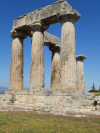










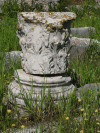
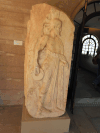
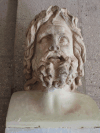
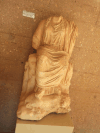
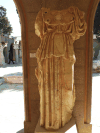
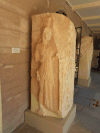
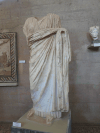
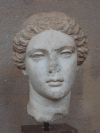
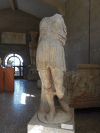
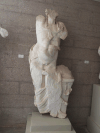
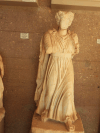
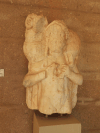

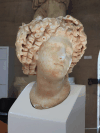
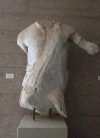
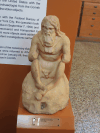
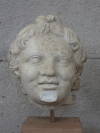
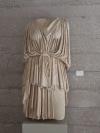
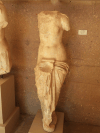
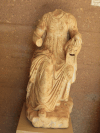
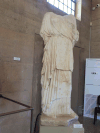
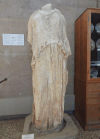




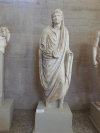
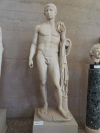
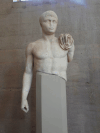
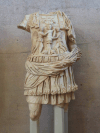
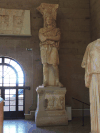
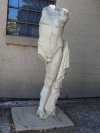
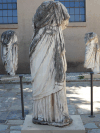
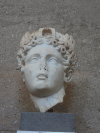


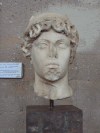



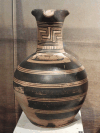
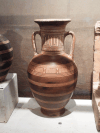


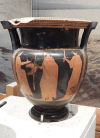

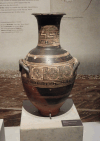



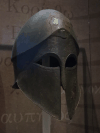




This page contains 73 pictures
Here are the links to the other main pages on Greece:
Page last updated on Fri Dec 2 11:40:33 2022 (Mountain Standard Time)
Corinth on soaring.geichhorn.com